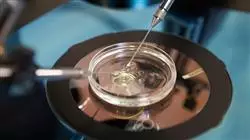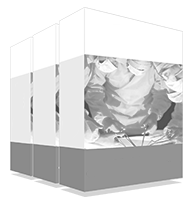University certificate
Scientific endorser

The world's largest faculty of nursing”
Introduction to the Program
The good work of nurses in the fields of gynecology and assisted reproduction favors the success of treatments"
 ç
çCare for women requires specific knowledge and attention. It is the result of a great deal of care and attention given with generosity and professionalism by different professional categories. Therefore, it requires the acquisition of special knowledge that is different from that of the rest of the population, and it is necessary to rely on professionals trained in these specific areas. A similar situation occurs in the field of Assisted Reproduction, since having specific knowledge will help professionals, but, above all, it will help patients.
This Advanced master’s degree aims to meet the needs of nurses specialized in these fields of care. Therefore, specific care in the field of gynecology, such as gynecological diseases, changes in the growth and aging of women, as well as the study of infertility in women, to learn to identify the most important factors involved in it and to know the most relevant and frequent pathologies that affect women with infertility.
There is a growing demand for nurses to have knowledge of this population in order to provide the best attention to ensure quality care adapted to new research. For this reason, this program aims to help professionals train in this field and care for their patients with the utmost scientific and professional rigor.
Throughout this program, the student will learn all of the current approaches to the different challenges posed by their profession. A high-level step up that will become a process of improvement, not only on a professional level, but also on a personal level.
This challenge is one of TECH social commitments: to help highly qualified professionals specialize and develop their personal, social and work skills during the course of their studies.
We will not only take you through the theoretical knowledge we offer, but we will show you another way of studying and learning that is more organic, simpler and more efficient. We will work to keep you motivated and to create a passion for learning within you, and we will push you to think and develop critical thinking.
The high demand for nursing professionals in the areas of gynecology and assisted reproduction favors this type of training"
This Advanced master’s degree in Gynecological and Assisted Reproductive Nursing contains the most complete and up-to-date scientific program on the market. Its most notable features are:
- The latest technology in e-learning software
- Intensely visual teaching system, supported by graphic and schematic contents that are easy to assimilate and understand
- The development of practical case studies presented by practising experts
- State-of-the-art interactive video systems
- Teaching supported by telepractice
- Continuous updating and recycling systems
- Self-regulated learning: full compatibility with other occupations
- Practical exercises for self-assessment and learning verification
- Support groups and educational synergies: Questions to the expert, discussion forums and knowledge
- Communication with the teacher and individual reflection work
- Content that is accessible from any fixed or portable device with an Internet connection
- Supplementary documentation databases are permanently available, even after the training has ended
A high level of scientific training, supported by advanced technological development and the teaching experience of the best professionals"
Our teaching staff is made up of working professionals. This way we ensure that we provide you with the up-to-date training you are expecting. A multidisciplinary team of trained and experienced professionals in different environments who will develop the theoretical knowledge in an efficient way, but above all, they will put the practical knowledge derived from their own experience at the service of the program.
This mastery of the subject is complemented by the effectiveness of the methodological design of this Advanced master’s degree, which has been developed by a multidisciplinary team of e-learning experts and integrates the latest advances in educational technology. This way, you will be able to study with a range of easy-to-use and versatile multimedia tools that will give you the necessary skills you need for your specialization.
The design of this program is based on Problem-Based Learning, an approach that views learning as a highly practical process. To achieve this remotely, we will use telepractice. With the help of an innovative interactive video system and learning from an expert, you will be able to acquire the knowledge as if you were actually facing the scenario you are studying at that moment. A concept that will allow students to integrate and memorize what they have learnt in a more realistic and permanent way.
A deep and comprehensive dive into strategies and approaches in Gynecological and Assisted Reproductive Nursing "

We have the best teaching methodology and a multitude of simulated cases that will help you train in real situations"
Why study at TECH?
TECH is the world’s largest online university. With an impressive catalog of more than 14,000 university programs available in 11 languages, it is positioned as a leader in employability, with a 99% job placement rate. In addition, it relies on an enormous faculty of more than 6,000 professors of the highest international renown.

Study at the world's largest online university and guarantee your professional success. The future starts at TECH”
The world’s best online university according to FORBES
The prestigious Forbes magazine, specialized in business and finance, has highlighted TECH as “the world's best online university” This is what they have recently stated in an article in their digital edition in which they echo the success story of this institution, “thanks to the academic offer it provides, the selection of its teaching staff, and an innovative learning method aimed at educating the professionals of the future”
A revolutionary study method, a cutting-edge faculty and a practical focus: the key to TECH's success.
The most complete study plans on the university scene
TECH offers the most complete study plans on the university scene, with syllabuses that cover fundamental concepts and, at the same time, the main scientific advances in their specific scientific areas. In addition, these programs are continuously being updated to guarantee students the academic vanguard and the most in-demand professional skills. In this way, the university's qualifications provide its graduates with a significant advantage to propel their careers to success.
TECH offers the most comprehensive and intensive study plans on the current university scene.
A world-class teaching staff
TECH's teaching staff is made up of more than 6,000 professors with the highest international recognition. Professors, researchers and top executives of multinational companies, including Isaiah Covington, performance coach of the Boston Celtics; Magda Romanska, principal investigator at Harvard MetaLAB; Ignacio Wistumba, chairman of the department of translational molecular pathology at MD Anderson Cancer Center; and D.W. Pine, creative director of TIME magazine, among others.
Internationally renowned experts, specialized in different branches of Health, Technology, Communication and Business, form part of the TECH faculty.
A unique learning method
TECH is the first university to use Relearning in all its programs. It is the best online learning methodology, accredited with international teaching quality certifications, provided by prestigious educational agencies. In addition, this disruptive educational model is complemented with the “Case Method”, thereby setting up a unique online teaching strategy. Innovative teaching resources are also implemented, including detailed videos, infographics and interactive summaries.
TECH combines Relearning and the Case Method in all its university programs to guarantee excellent theoretical and practical learning, studying whenever and wherever you want.
The world's largest online university
TECH is the world’s largest online university. We are the largest educational institution, with the best and widest online educational catalog, one hundred percent online and covering the vast majority of areas of knowledge. We offer a large selection of our own degrees and accredited online undergraduate and postgraduate degrees. In total, more than 14,000 university degrees, in eleven different languages, make us the largest educational largest in the world.
TECH has the world's most extensive catalog of academic and official programs, available in more than 11 languages.
Google Premier Partner
The American technology giant has awarded TECH the Google Google Premier Partner badge. This award, which is only available to 3% of the world's companies, highlights the efficient, flexible and tailored experience that this university provides to students. The recognition as a Google Premier Partner not only accredits the maximum rigor, performance and investment in TECH's digital infrastructures, but also places this university as one of the world's leading technology companies.
Google has positioned TECH in the top 3% of the world's most important technology companies by awarding it its Google Premier Partner badge.
The official online university of the NBA
TECH is the official online university of the NBA. Thanks to our agreement with the biggest league in basketball, we offer our students exclusive university programs, as well as a wide variety of educational resources focused on the business of the league and other areas of the sports industry. Each program is made up of a uniquely designed syllabus and features exceptional guest hosts: professionals with a distinguished sports background who will offer their expertise on the most relevant topics.
TECH has been selected by the NBA, the world's top basketball league, as its official online university.
The top-rated university by its students
Students have positioned TECH as the world's top-rated university on the main review websites, with a highest rating of 4.9 out of 5, obtained from more than 1,000 reviews. These results consolidate TECH as the benchmark university institution at an international level, reflecting the excellence and positive impact of its educational model.” reflecting the excellence and positive impact of its educational model.”
TECH is the world’s top-rated university by its students.
Leaders in employability
TECH has managed to become the leading university in employability. 99% of its students obtain jobs in the academic field they have studied, within one year of completing any of the university's programs. A similar number achieve immediate career enhancement. All this thanks to a study methodology that bases its effectiveness on the acquisition of practical skills, which are absolutely necessary for professional development.
99% of TECH graduates find a job within a year of completing their studies.
Advanced Master's Degree in Gynecological and Assisted Reproductive Nursing
According to data provided by the World Health Organization (WHO), 1 in 4 couples in developing countries are affected by infertility problems. However, this is no longer an impediment to becoming parents. Thanks to assisted reproductive technology, it is now possible to treat this problem. In this clinical setting, the work of nurses represents one of the most fundamental roles, since they are responsible for providing comprehensive care throughout the entire therapeutic process, including the diagnostic analysis of patients and support at each stage. In addition, they provide technical assistance in the performance of tests, pharmacological guidelines and coordination of clinical activities. Are you interested in exploring this field? At TECH you will find the Advanced Master's Degree in Gynecological and Assisted Reproductive Nursing, in which you will study the techniques and actions in the related interventions. Through the guidance of a team specialized in fertility medicine and assisted conception, you will learn relevant topics such as reproductive anatomy-physiology, genetics and immunology of reproduction and the study of infertility in women and men.
Get to know the gynecology and assisted reproduction service
Nurse Jean Marian Purdy laid the foundations of what would become artificial fertilization by transferring a laboratory-grown embryo into a uterus. Today, this revolutionary experiment is the salvation for many people with infertility problems. The remarkable scientific and technological advances in this field require a relevant update of knowledge. Therefore, in this TECH online postgraduate degree you will find the most innovative learning methodologies, complemented by unique multimedia material of its kind. Through 18 thematic modules, you will learn about reproductive endocrinology, the ovarian-uterine cycle, the semen freezing procedure and the immunological factors that affect assisted reproduction. You will also delve into the legal and ethical aspects of the field, the management of gynecological-obstetric emergencies, donor banks and personalized pharmacology. Finally, you will delve into artificial fertilization techniques, the approach to gynecological problems and psychological support in special situations. At the end of the two years of education, you will be able to safely treat patients suffering from various diseases related to the reproductive field.







